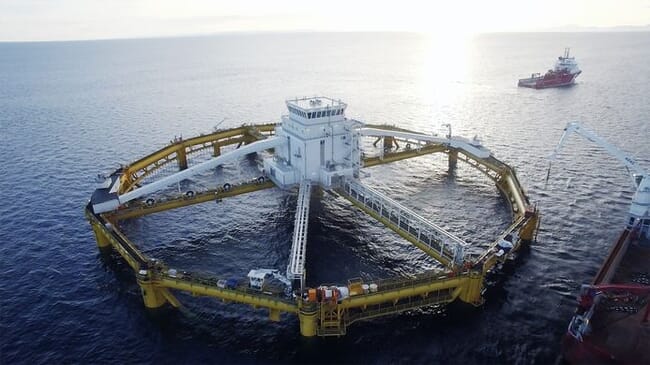SalMar is looking to launch the second of its successful development licence concepts following encouraging signs from Ocean Farm 1 – the first concept to be awarded development licences by the Norwegian Directorate of Fisheries.
“It [Ocean Farm 1] is a large and challenging project, which has involved the testing and development of new and innovative equipment technology that will be of benefit to the whole industry. The installation has been situated in an area of sea called Frohavet, off the coast of Frøya. Harvesting of the installation’s first salmon started at the end of September 2018 and ended in early 2019. After 15 months at sea, we can confirm that the fish achieved an extremely good growth rate and that its quality was uniformly good. Few salmon lice were observed, and it was not necessary to apply a single delousing treatment,” explains SalMar in its latest annual report, which was published last week.
“The promising biological results from the first production cycle reinforce our confidence that farming salmon further out in the ocean is the right way to go. We are now preparing for the next transfer of smolt to Ocean Farm 1 in the summer of 2019. In this connection, we will implement a number of measures based on lessons learned from the initial transfer,” the report added.
The company is now looking into developing an even more ambitious model, the Smart Fish Farm, which was also awarded eight development licences and “marks a substantial step towards the establishment of aquaculture in the open ocean”.
“Substantial design work remains to be done before the vast new installation can be built and put into production. The objective is to locate the fish farm in open water, 20–30 nautical miles off the coast of Trøndelag, an area well known for its harsh weather conditions. Nothing similar has ever been attempted before and an important aspect will be to test the way technology and biology interact in such exposed surroundings,” SalMar states.

They also emphasise the key differences between the new designs – not least the ability to treat fish in the Smart Fish Farm in a manner that results in “no emissions”.
While similar in appearance to the Ocean Farm, SalMar explains that the new design: “Will withstand considerably more exposed conditions and have twice the capacity [of the Ocean Farm]. However, the biggest difference is that it will have a closed central column for the treatment of fish, the control and management of the unit, as well as an advanced system for the transportation of fish linked to the eight surrounding production chambers.”
“The Smart Fish Farm will be largely immune from environmental impact caused by other fish farms because it can be situated in any exposed area along the whole Norwegian coast where the outer ocean currents flow. At the same time, its design allows fish to receive necessary treatments in a closed environment, from which there are no emissions,” they add.
The development licences for the two concepts have been granted for a period of seven years. However, they may then be converted into ordinary production licences after this time if the Norwegian Directorate of Fisheries’ target criteria are met.


